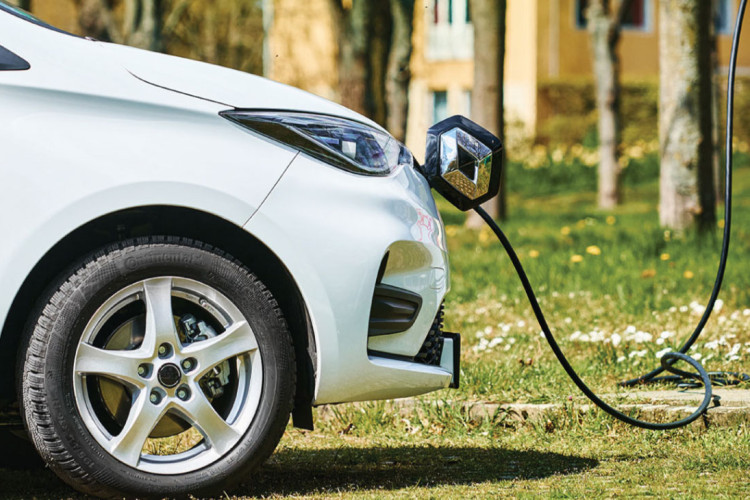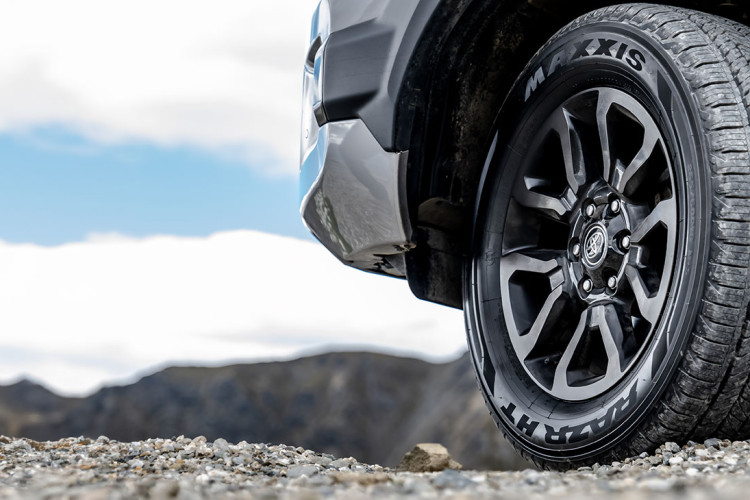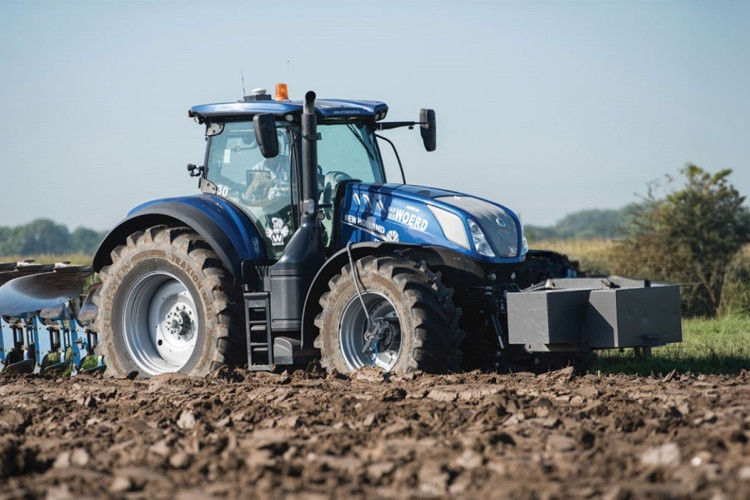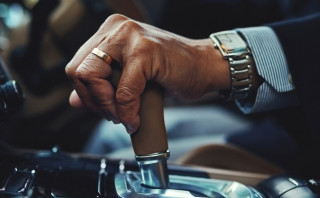Automatic or Manual?
Picture the scene. The sun is shining in the Swiss Alps. The road in front of you twists and turns, snaking its way around the base of the mountains. There are hairpins after hairpins. You’re in a convertible (you choose which) and on the back seat is a wicker picnic basket, full of fresh bread and an array of gourmet cheeses. The air is filled with the constant roar of the V8 engine as you accelerate quickly, brake sharply and corner deftly. This is driving.
Now you look down. Do you see a gear stick or is the car an automatic? This is a big question as the gear stick is part of the romantic history of the automobile. Petrol heads and people over 50 will reminisce about the cars of yesteryear that you had to drive. And they mean drive. None of this computer aided, traction control fancy malarky. And real driving can only be done with a manual. Right?
A brief history of the automatic
All of those folk who reminisce about manuals, vinyl records and rugby games with proper biff, might be surprised to know the automatic transmission has been a thing for a long time. It’s not some upstart here to ruin the fun.
The first automatic is credited to a Canadian chap by the name of Alfred Horner Munro. Old Alfred was a steam engineer and developed a system which used compressed air to change gears. He called it the Automatic Safety Transmission (ATS) and took out a patent on it in 1921. There was an issue though. It lacked power and didn’t work too well.
The first hydraulic automatic transmission was invented over 10 years later in 1932, by Jose Braz Araripe and Fernando Lehly Lamos of Brazil. At that time, General Motors was toying with an automatic transmission but couldn’t quite crack it. So they purchased the plans from the Brazilian boys and spent some more time in the lab, making it work as best they could. When we say ‘more time’, we mean the rest of the decade.
In 1940 they were finally ready. Enter the new Oldsmobile, featuring this fancy new thing called a ‘Hydra-Matic Transmission'. You can only imagine it was greeted with gasps of wonder and astonishment. And chaps who wore light blue suits and used too much brylcreem. Or Business Development Managers as they are called nowadays. Regardless, it seems it worked and the driving public was impressed. It was a bit of a gamble for the Detroit based auto giant. GM President Alfred P. Sloan was pushing for something to make cars easier to drive. His thinking being this would inspire more people to get behind the wheel and he could sell more vehicles. Not everyone was convinced it would work but he kept at it and was proven right. Not the only time he was proven right either. Old Alfred was a bit of a business genius and under his guidance General Motors was to become the biggest company in the world.
The success of the Hydra-Matic took a little detour in the 1940’s when the United States entered WW2. GM put the auto gearbox in tanks for the war effort and this came with a side benefit for GM. Some of the niggling kinks of the new gadgetry had time to be ironed out. So come the early 50’s and everything was humming, so much so that 2 out of every 3 GM cars were now automatics.
Here in New Zealand, the majority of cars were still being imported from Great Britain in the 1950’s so we’re likely safe to assume the majority were still manual. That said, the Brits had been pondering the problem for a while. They were losing sales to the upstart Americans and the voice of the industry, Autocar Magazine, was writing about it as an inevitability.
Types of automatics
At this juncture, we should get a little technical. Not too technical mind, just a little. You see, not all automatics are the same.
Some of our older readers will likely remember the early versions of semi-automatic transmissions. Otherwise known as an Automated Manual Transmission. They tended to be a little jerky when changing gear and you could feel the car lurch as the engine revs suddenly dropped when moving up through the gears.
Then there’s the Continuously Variable Transmission (CVT). This doesn’t just do away with the clutch pedal, it removes the gears completely. Instead, it uses pulleys which connect the engine to the wheels. These pulleys change width, which provides the gearing ratio. Although technically there aren’t gears as the number of ratios is virtually unlimited. Sounds complicated? Read more on how it works. Just know it does work and it’s a pretty slick bit of engineering.
Next up is the Dual Clutch Transmission. It has...erm...two clutches. Which sounds like a step backwards initially. They do away with the torque converter used in a normal, basic auto. Instead, they use two output shafts to split the gearing ratio. Why do you need two sets of gears then? Well, it makes gear changes incredibly quick, as in milliseconds. For this reason, DCT Transmissions were usually only found in higher end sports cars. VW uses them a lot too.
To be honest, unless you enjoy reading technical manuals or work in a garage, you don’t need to know any of the above. All you need to know is whether whatever you have works ok and isn’t going to cost a small fortune if something goes wrong.
But wait...what about those flappy paddle gear changing things that Ferrari’s have on the steering wheel? They use the dual clutch version...very expensive ones. Just the controls are in a different place.
The case for automatic transmissions
Auto’s are popular for a few reasons. Top of the pile has to be ease. With no gears to change manually, you can concentrate on the children arguing in the back or the music that one of your passengers has chosen despite your objections. Other distractions aside, there is one less reason to take your hands off the steering wheel. That said, we don’t know if there is any proof autos are statistically safer (or more dangerous).
If your daily drive includes traffic lights, roundabouts and the odd bit of congestion, then autos are pretty handy. The benefits they provide in stop/start traffic alone, make them worth it for a lot of people.
What else? They reduce fuel consumption by shifting gear at the optimum time. That gear shift is normally quicker than you can do it too, so no engine power is lost (saves fuel too).
There’s also the question of hills. If you’ve ever been in traffic on a steep hill in a manual, you quickly learn if your clutch skills are up to scratch or not. Hill starts are much easier in an auto too. Beware though, you can still go backwards when in ‘drive’ if the hill is steep enough and you take your foot off the throttle.
The case for manual transmissions
We need to talk about control because if you like it… a manual is for you. You decide when you change gears, no-one else. Well, apart from the whining engine anyway. That’ll let you know a gear change is needed.
When it comes to cost, manuals have a few tricks up their sleeve. Purchase price is normally a bit less and service/repair costs are less. Sure, you have a clutch to replace every now and then but that’s a pretty straightforward job (so we’re told).
For anyone going off-road or wanting to enjoy a track day, manuals are going to provide a greater degree of control and a better test of your driving skill. They’ll make it more fun.
A spanner in the gearbox
To be honest, it’s pretty much a case of ‘horses for courses’ when it comes to choosing between an auto or manual. You go for what works best for you and your needs. Neither option is inherently better than the other. There is one thing to be aware of though...if you sit the restricted test in an automatic then you can’t drive a manual without a supervisor until you pass your full license test.
Given around 90% of vehicles sold in New Zealand are automatic, there’s little chance you’ll be inconvenienced too much. But if you develop a hankering for an old classic then you might want to learn to drive in a manual and develop some good habits. Driving abroad might be an issue too. Sure, in the States nearly every car sold is an auto. No issues there then. The Brits still cling to their manuals though and rental companies will often charge more if you want an automatic car. This is because they make up a lower proportion of rental fleets so optimising the fleet is more difficult when someone requests one.
The future
Here’s the bad news for manual lovers. You can no longer buy a Ferrari or Lamborghini with a manual transmission. Sorry to dash those dreams.
It gets worse too. No more Shelby Mustang. In fact, if you want a vehicle from the US then chances are it comes in a choice of automatic or automatic. Less than 2% of new cars have a manual transmission. Take solace in this list though as there’s some decent manuals still to be had.
Can it get any worse? Yes, yes it can. Electric cars recently outsold manuals. In the next 10 years we’ll see their popularity explode and, in 20 years, very few of us will be driving combustion engined vehicles. As yet, you cannot buy a new EV with manual transmission.
So that’s that then. The demise of the manual is upon us. They’ll be destined to be driven only by purists who meet at weekends to compare gear sticks and reminisce about the good old days. Much like vinyl junkies who clamber for the imperfect audio reproduction of records. Except manual junkies are less likely to be wearing cardigans and smelling of mothballs. At least we like to think so.

Whatever your driving style, we have tyres to suit.
More tips and articles

Tyres for Electric Vehicles

Product Spotlight:
Maxxis HT780 RAZR HT

